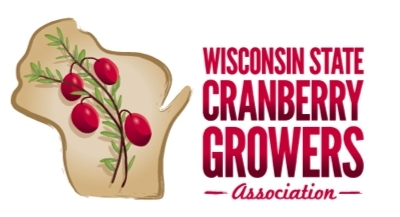WISCONSIN RAPIDS, Wis.--(BUSINESS WIRE)--Wisconsin’s cranberry industry is projected to produce more cranberries than any other state this fall, with a crop of 5 million barrels of fruit, according to crop projections announced today by the U.S. Department of Agriculture’s National Agriculture Statistical Services (NASS). The projected bountiful crop, part of the more than 8.4 million barrels of cranberries expected in 2015 nationwide, would continue to challenge the industry with an oversupply of fruit.
“Our growers do a great job and we have much pride in our crop, but today’s news is bittersweet as our industry continues to work its way out of an oversupply,” said Tom Lochner, executive director of the Wisconsin State Cranberry Growers Association (WSCGA).
According to Lochner, the combined increase in supply and flat demand in the juice category is creating the market imbalance. He said the use of the latest science and technology by Wisconsin’s cranberry growers is resulting in stronger, healthier crops. That coupled with new U.S. and Canadian cranberry acreage that is now producing fruit and a very kind Mother Nature in recent years, has resulted in the large yields. He added that the industry’s focus now is to grow more and broader interest and demand from the international market.
So far in 2015, demand is increasing for the tart red berry, but not yet at the pace needed. According to the U.S. Cranberry Marketing Committee’s latest report, international demand for cranberries is up by about 6 percent overall, including increased cranberry exports to all international markets targeted by the industry, especially the Asian markets. The largest percent increases in cranberry exports over the last year have been in Hungary at 118 percent, Turkey at 114 percent, and China at 41 percent, however, those countries still represent small volumes compared to the largest international importers in Western Europe. CMC’s latest report saw domestic cranberry sales up 8 percent driven by government purchases for food programs to help offset the market imbalance. CMC’s next report is expected in late September.
“We are cautiously optimistic that we will see continued upticks in world demand that will start to edge us toward a better balanced marketplace for the berries,” said Lochner. “Cranberries are a great tasting and healthy part of any diet, including many foods gaining in popularity such as smoothies and quinoa. We just have a ways to go and will keep working hard.”
In 2014, Wisconsin growers had a crop of 4.9 million barrels. The NASS projections, if realized, would result in the 2015 cranberry crop being 2 percent larger than last year’s crop. That projection is dependent on continued good growing weather, no damaging hail storms or major temperature drops leading up to the fall harvest, added Lochner.
Wisconsin will begin harvesting its cranberry crop in late September and continue through much of October to support fresh fruit needs for the early Canadian Thanksgiving and the U.S. holiday season. Other cranberries are frozen and stored for longer-term sales as frozen berries, sweetened dried and dried cranberries, juices, sauces and more.
“The oversupply is quite a challenge for all states that grow cranberries but especially here in Wisconsin where more than half of the world’s supply is grown,” said Lochner.
NASS, which bases its crop estimates on grower surveys nationwide, also made crop projections for other top cranberry producing states. Those projections are: Massachusetts at 2.1 million barrels, New Jersey at 585,000 barrels, Oregon at 504,000 barrels and Washington at 181,000 barrels. The nationwide forecast is expected to be nearly identical to 2014’s production.
WSCGA was founded in 1887 and is committed to developing and implementing programs that will assist growers in doing a better job of growing cranberries and strengthening the public support for the industry in Wisconsin. For more information, visit www.wiscran.org, Like WSCGA on Facebook and Follow on Twitter.




